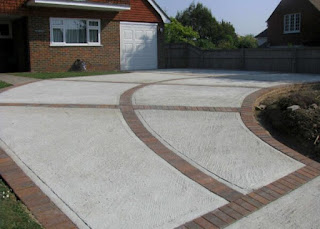A Comprehensive Overview of Floating Concrete Steps
Floating concrete steps are a modern and attractive feature of residential and commercial properties. Their unique design, which makes them hover above the ground, adds a touch of elegance and class. In this detailed study, we'll delve into floating concrete steps, investigating their design options, installation methods, and their numerous advantages to property owners.
Design Options:
● Suspended Appearance
Floating concrete steps get their distinguishing appearance by giving the impression of being suspended in mid-air. Typically, this is accomplished by concealing the supporting structure behind the stairs, resulting in a visually clean and open environment. The steps float above the ground, expressing lightness and modernity.
● Material and Finish Options
Floating concrete steps come in a variety of materials and finishes. The stairs can be made from various concrete mixtures, allowing for colour, texture, and finish variations. Popular options for adding character and personality include exposed aggregate, smooth surfaces, and stamped patterns.
● Custom Shapes and Sizes
One of the primary benefits of floating concrete steps is their design versatility. They can be tailored to meet the space's specific needs, whether it's a simple straight flight of steps or a more elaborate, curved design. Customization enables homeowners and designers to create a series of stairs that blend in with the property's overall look. You can hire Stencil Concrete Sydney services if you want your designs in a stencil pattern.
Procedure for Installation:
● Site Preparation
Proper site preparation is essential for the installation of floating concrete steps. The area where the stairs will be built is excavated and levelled to provide a stable foundation. Paying attention to the soil composition and compaction is critical to avoid settling or moving over time.
● Construction of Formwork
Formwork is then built to specify the shape and size of the steps. The formwork in the case of floating steps not only supports the concrete during pouring and curing but also plays an important function in concealing the underlying structure, contributing to the steps' floating appearance.
● Reinforcement and Pouring
Steel reinforcement, such as rebar, is frequently integrated into concrete structures to improve strength and longevity. The concrete is poured and allowed to cure when the formwork and reinforcement are in place. Curing properly is critical to achieving the optimum strength and lifetime of the steps.
● Finishing Touches
After the concrete has cured, the steps are finished. The Stencil Concrete Sydney contractors may use polishing, staining, or adding sealants to improve the aesthetic appeal and protect the surface. The appearance of floating steps mainly relies on the quality of craftsmanship; thus, care is taken to achieve a smooth and consistent finish.
Concluding Thoughts
For those wishing to add a touch of modern design to their properties, floating concrete steps are a modern and visually attractive option. These steps provide aesthetic appeal and utility, with various design options, personalization options, and durability and low maintenance benefits.
Whether used to improve a home's entry or as an architectural feature in a business area, floating concrete steps are a versatile and long-lasting solution for creating visually attractive outdoor surroundings.


.jpg)
Comments
Post a Comment